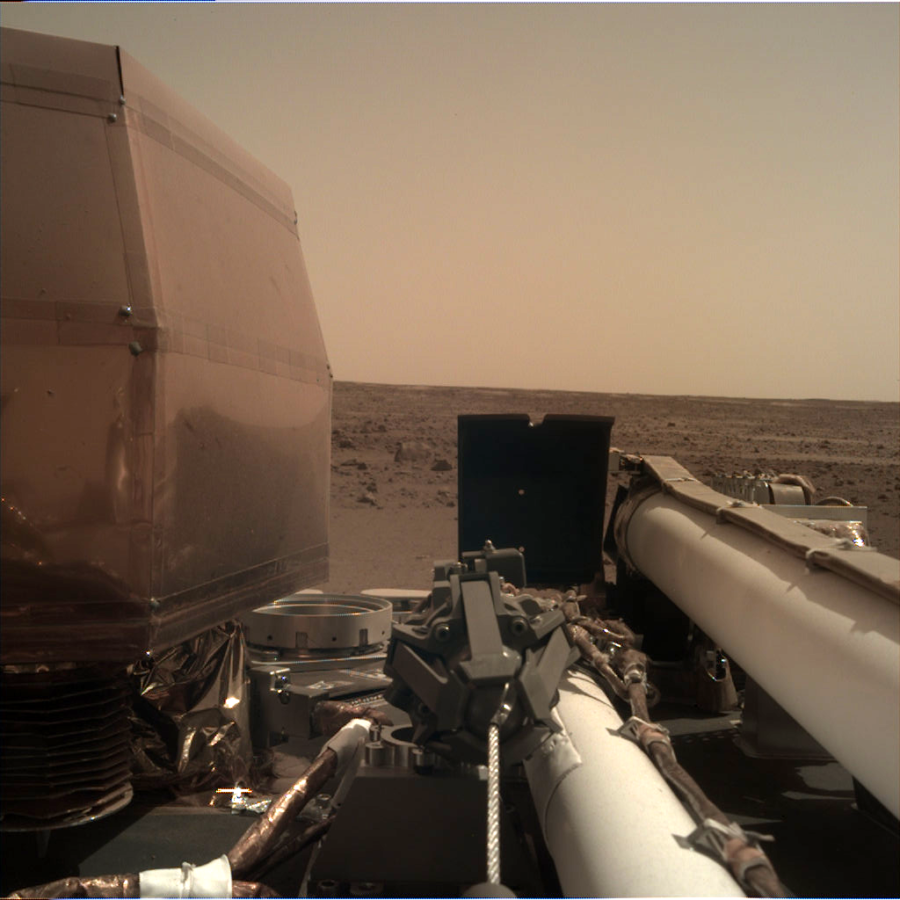NASA’s New Rover Getting ‘InSight’ on Mars
Insight lands and takes a picture using its Instrument Deployment Camera (IDC) from the surface of Mars.
NASA’s newest lander, InSight, touched down on the Martian surface on Nov. 26. It’s mission is to study the interior of Mars.
At Vandenberg Air Force Base, InSight was launched on May 5. It has many navigation tools including a star tracker, a device that looks at other stars and calculates the craft’s own orientation with respect to Earth and the sun. After a six-month journey through space with many flight adjustments, it finally reached Mars.
The lander then descended 80 miles using a thick heat shield and a parachute; next, it separated itself from the backshell and parachute, and it then used the 12 descent engines to slow its fall. After “seven minutes of terror” (descent through the atmosphere) when the lander decelerated through the atmosphere, the lander touched down on the surface.
“InSight’s view is a flat, smooth expanse called Elysium Planitia, but its workspace is below the surface, where it will study Mars’ deep interior,” according to NASA’s Twitter.
InSight’s science goals and instruments are different from rovers and landers from previous missions, which mostly focused on exploring the surface.
InSight is studying the interior of Mars, scientific instruments must be carefully placed. For example, the Heat Flow and Physical Properties Package (HP3) burrows down into Martian soil and generates a heat pulse to measure the heat flow in the surrounding soil, finding the thermal conductivity, a measure of how fast the soil heats up.
“That’s key to learning not only about Mars, but about how all the rocky planets of the solar system formed and evolved,” Principal Investigator Tilman Spohn said.
Another instrument is the Rotation and Interior Structure Experiment (RISE).
“RISE helps us keep tabs on InSight,” Principal Investigator William Folkner said. “This tells us exactly where Mars is in space, and just how much the planet wobbles around in its orbit.”
Mars was chosen to be observed because of its volcanoes, canyons, rocks and soil. It is a “perfect laboratory” for scientists to study the evolution of planets. Although there is a low level of geological activity on Mars, InSight will hopefully reveal if Mars is actually active. It will remain active until Nov. 24, 2020.
Your donation will support the student journalists of Portola High School. Your contribution will allow us to purchase equipment and cover our annual website hosting costs.

William Hsieh is your 2019-2020 Front Page Editor. He has previously served as the Director of Photography last year. He likes photography and graphic...




